The X100S camera is such a capable camera that I actually used it as my sole camera for over 3 months and hardly missed a DSLR. It was the only camera I had with me as I traveled through Italy and I don’t regret it one bit. You can read my full review here.
Tripod
You’ll want to take a tripod for sunrise and sunset photographs, if you don’t plan on waking up for the sunrise then slap yourself in the face for me. The sunrises and sunsets at the Grand Canyon are unlike anything you’ve ever seen (unless, of course, you’ve seen them at the Grand Canyon before).
You don’t need a fancy tripod for your trip to the Grand Canyon but if you have not invested in a good one yet then why not start now. I recommend the light, sturdy, MeFoto A1350Q1T Roadtrip Travel Tripod Kit (Titanium) which I ranked the most versatile camera tripod of 2012 and still love today. You can read my review of it here.
Lenses
The lens you choose to put in front of the sensor on your camera will directly impact the quality of images you’re able to capture. Most people I see never realize the full potential of their cameras sensors because they can either not afford the quality of lens you’d need or are just unaware of the impact their lens is having. Choosing the best travel lens is a very personal thing and I won’t presume to tell you which is best for your particular style of shooting or budget. What I will tell you are some guidelines I use when choosing lenses for myself.
Weight
You’ll have to weigh (pun intended) the benefits of professional glass vs. your needs when traveling. Will you be hiking great distances where an all metal lens with lots of glass elements will weigh you down uncomfortably? You’re the only one that can judge that. If you chose to go with, or already have, one of the mirror-less options I mentioned above (the EM1 or EM5) then this is a moot point because their lenses are smaller and much lighter.
Size
I like to hike with a prime lens affixed to my camera for the sole fact that I don’t want to smack a longer lens off a boulder or tree. Again, if you are using a mirror-less camera then you don’t really have to worry about this because the lenses are smaller and less likely to stick off your waist like a third leg. Think about where you’ll be hiking, if you decide to travel down one of the few trails that takes you to the bottom of the Grand Canyon you’ll have narrow paths where you’ll be brushing against the canyon wall and potentially bump your lens if it’s longer.
Focal Length
Landscape photography is typically taken with wide-angle lenses, think 24mm (or 12mm if you are using a mirror-less camera like the EM1 or EM5). There is no rule out there that tells you that this is a must, I’ve seen beautiful images of landscapes taken on all different focal lengths. The reason people like the wider angle is because you are able to get more of the scene in one image and it makes your landscape look more vast. A zoom lens, on the other hand, when zoomed in (longer focal length) has a tendency to bring your scene closer to the viewer and make vast mountains look like they are much closer to each other (You’ll have to take my word for it because telling you how this happens will be another article in the future).
Where to Go
When visiting a new place one of the most difficult things for a photographer who is unfamiliar with the lay of the land is figuring out where to start. Hopefully after reading this article you’ll have a good idea of where you want to begin. I’ll take you through a day at the Grand Canyon below with some ideas of where to shoot from, where to stay, where to eat, and where to avoid.
Lodging
There are a couple of different options for lodging when visiting the Grand Canyon, you can stay right outside of the park entrance (literally a five minute drive away) for around $100 a night or you can stay right on the edge of the Canyon in one of the park lodges for about three times that amount. If you’re only staying for a night or two then go ahead and splurge on one of the park lodges but if you plan on spending a few days there and very little time in your room then why not go the cheaper route? The towns right outside of the park are far less crowded and less expensive.
Expensive
If money is no object and you’d like to be so close to the canyon that you could spit into it from the front door of your hotel then you’ll want to check out the lodging in the Grand Canyon Village. The iconic El Tovar is the best lodge in regards to location and atmosphere. There is a small sitting area with a bar that looks right out over the canyon and it’s central to the shopping and train in the Grand Canyon Village. Scenic hikes start right outside of the hotel door where you can catch the Grand Canyon paved Rim Trail that leads to lots of other more difficult trails.
Cheaper
There are a few different areas you can visit around the Grand Canyon but the South entrance of the Grand Canyon is access to some of the best trails and most beautiful scenery so that is where I’ll focus. The canyon is massive so plan accordingly, trying to see everything everywhere would take weeks.
Tusayan
There is a great little town right outside of the South entrance of the Grand Canyon called Tusayan where you’ll find plenty of hotels at a fraction of the cost of the park lodges and restaurants, gift shops, as well as the Nation Geographic visitors center that is worth a visit.
The Red Feather Lodge is where I stay when visiting and I’d highly recommend it, the cost was around $100 a night and the rooms were clean. If you stay here you’ll have a choice between the older motel looking section or the newer hotel type area… I’d recommend the older motel type lodging because your door goes directly to the outside where your car is parked and you don’t have to travel through the lobby or up an elevator to get there. The motel part feels more historic as well and after driving in from Phoenix on part of old Route 66 it added to the experience.
Food
I’ll keep this short because there are really only a few places you should go while visiting if you don’t hate your money. I’ll also touch on one restaurant you should avoid like the plague because it is a tourist trap (deemed so by the locals and my wallet).
Dinner
The Yippie Ei O Steakhouse is the best bang for your buck around the South Entrance of the Grand Canyon, the atmosphere is neat and the food is excellent. Corn on the Cob, Steak, and Cowboys… What more could you ask for? The seating is rather close together but not uncomfortably so. The restaurant gets busy quick so get there early. Expect to stand in line for a bit if you get there much later than 5pm.
Lunch
There are a few options here, depending on what you like. You could go next door to Wendy’s if you want fast food, next door to that is an espresso/gift shop that will put sandwiches together if you want something to take on a hike, or you could hit the Mexican place up across the street.
Stay Away From
Do not go to Canyon Pizza, they will over charge you for pizza ($50 for a tiny pizza!??) and it tastes awful. The service is terrible. You won’t have to wait in line if you go there but that’s for a good reason. You’ve been warned.
Breakfast
There is only one place I recommend for breakfast, everywhere else costs an arm and a leg and the food is so-so. The Best Western motel about three doors down from the Red Feather lodge has the best breakfast restaurant near the South Rim of the Grand Canyon. The breakfast is cheap, it’s never crowded, and the service is excellent. You don’t need to be staying at the Best Western to enjoy their restaurant so don’t be bashful.
Where to Photograph
If you do a little research (I assume that is how you found this site) then you’ll see that the South Rim is considered the more scenic rim to visit and I’d have to agree. The only thing you’ll miss is the scenic glass floor that you can walk out on and pay some person an exorbitant amount of money to take your picture because you won’t be allowed to take your camera on the glass floored lookout with you… On the other hand, I’d say you aren’t missing anything.
Sunrise
When you enter the park through the South entrance you can find one of the best places to score a decent sunset shot within about 5 minutes. The good news is it’s located right next to a parking lot, the bad news is it’s located right next to a parking lot. Get there early if you want to get a decent spot along the edge, and along the edge you will be. There won’t be anyone there telling you to step away from the edge so be very careful because you’ll see photographers getting stupid close to falling into the canyon.
Sunrise taken at Yavapai Point
Follow South Entrance Rd. and then turn left towards Yavapai Point. The best view is to the right of the Yavapai Point building, along the Rim Trail. After you watch the sunrise you’ll want to walk the Rim Trail to the left of the building and scout out a place to watch the sunset that evening.
Afternoon Hike
There is not a whole lot to do at the Grand Canyon other than hike and punch mules… I’m kidding, don’t punch the mules, they will kick you. If you plan on hiking down into the canyon, and you should, then you’ll want to check out the South Kaibab Trail, you can catch it right off the Rim Trail.

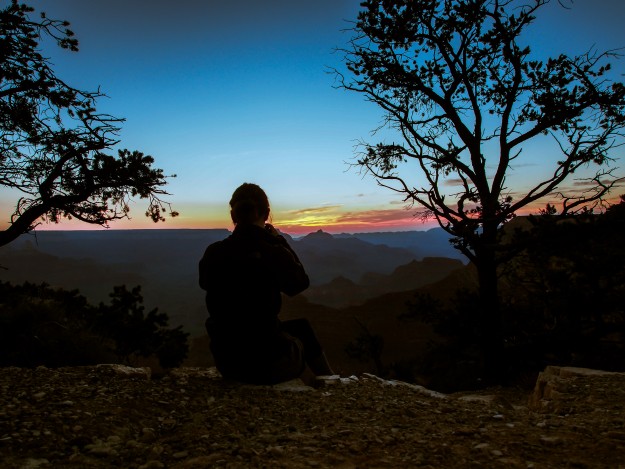
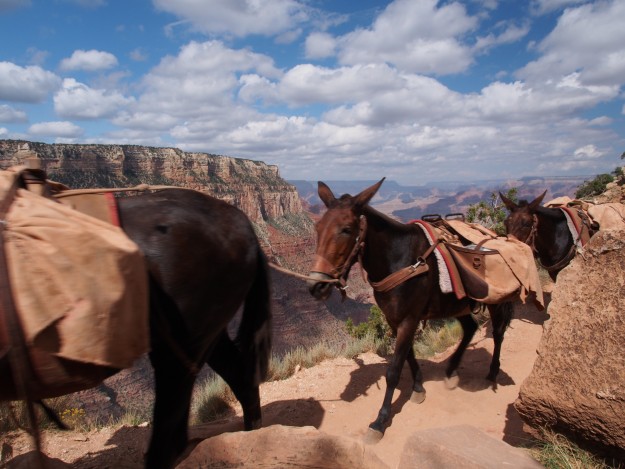
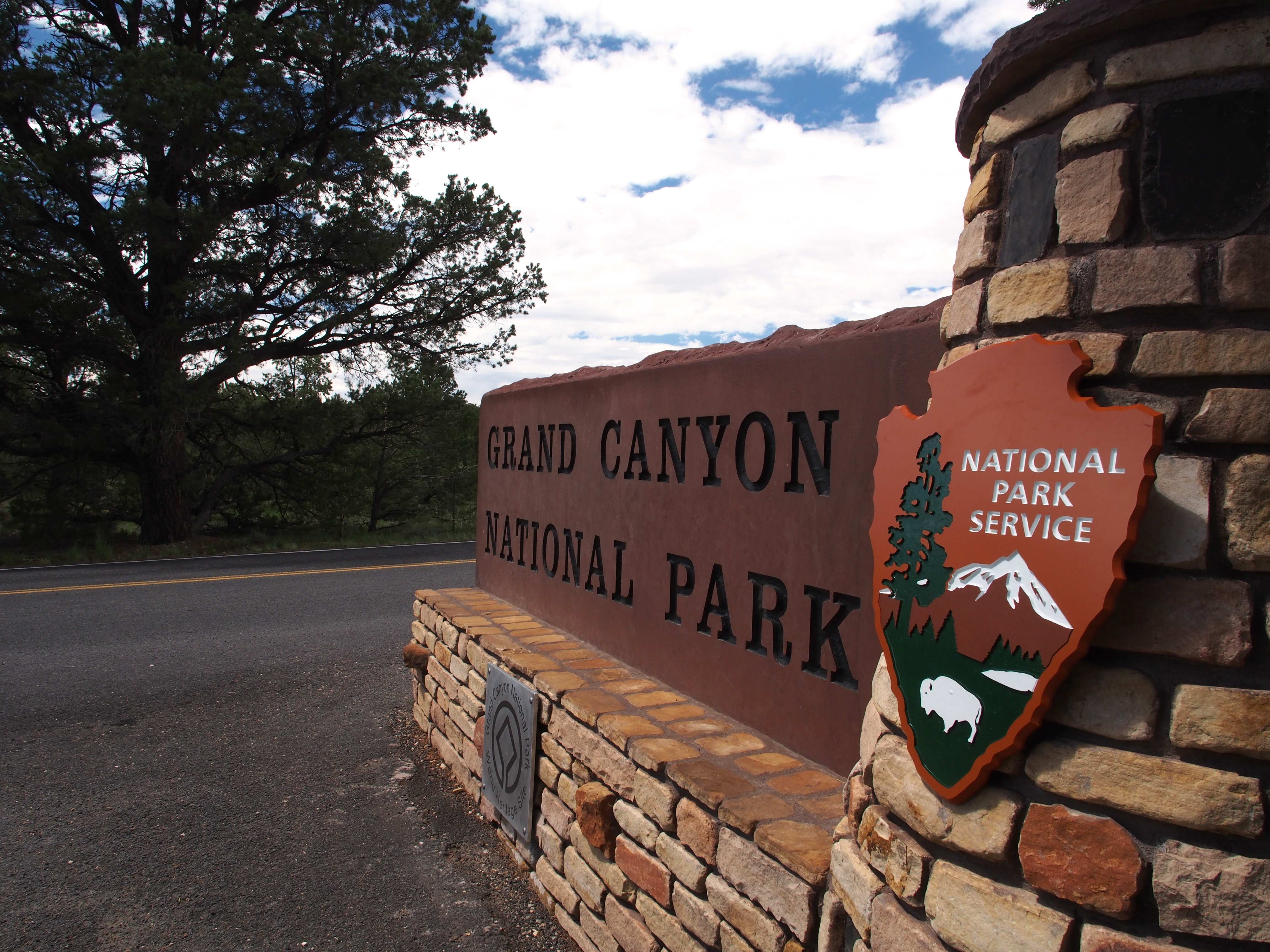
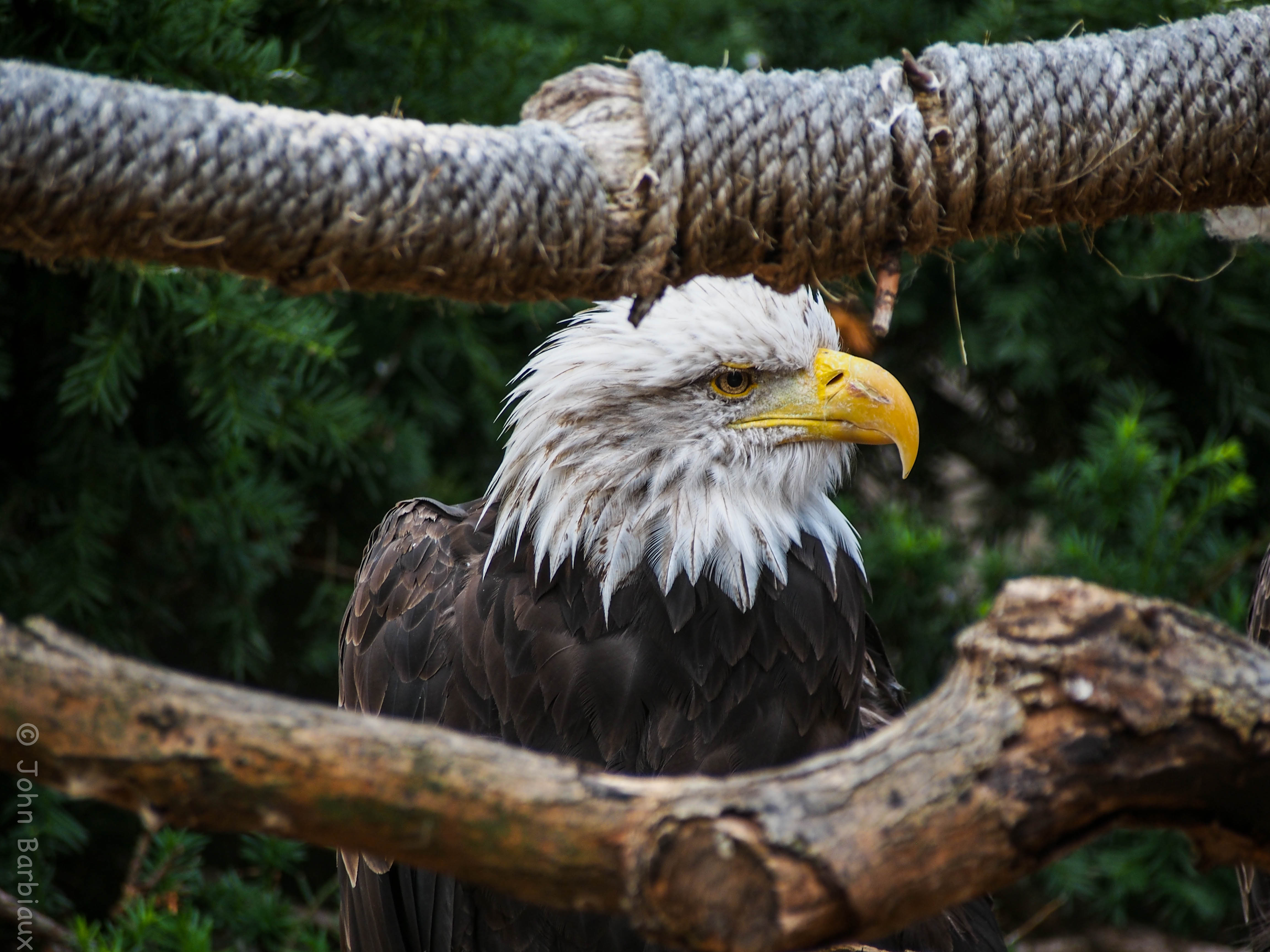
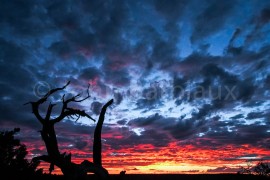
Great article! I was down the South Rim last Summer with carrying two Rolleiflexes and plenty of water.
Awesome. Thanks for the feedback. It’s a beautiful place and on my short list to revisit. Next time I’d like to spend more time at the bottom.
Great Article! Leaving for the South Kaibab Trail soon and then rafting the Colorado for about two weeks. I have a Rebel T5 that I was planning to bring with a 35mm lens. Do you recommend any kind of lens filter for those sunny days out on the river?
Thanks
Can’t go wrong with a circular polarizer to get those plush looking clouds and bluer (is that a word?) sky. Also, if you have room for a tripod you can grab a 10 stop ND filter to create long exposure images of the fast moving water to make it look silky smooth. Enjoy your trip!!